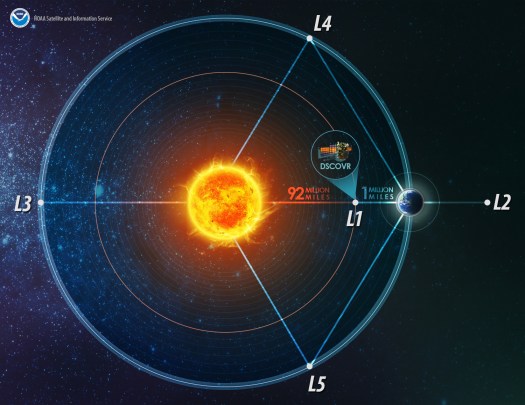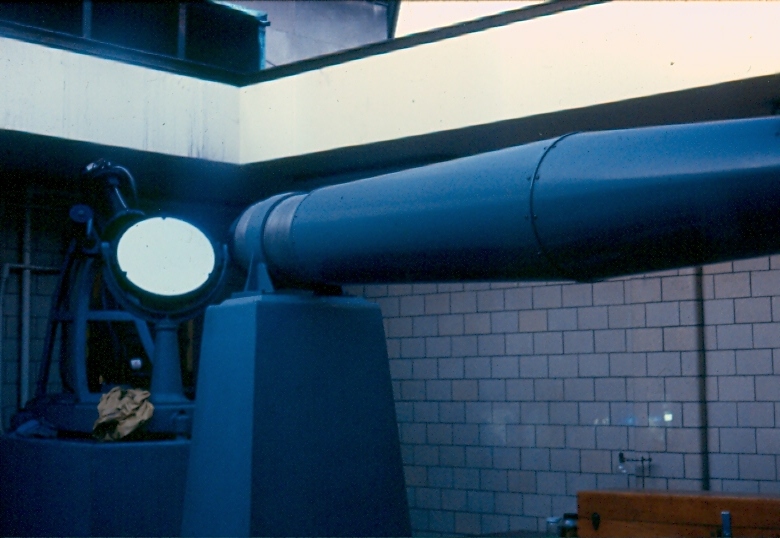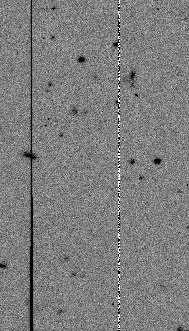
Location of the DSCOVR satellite, in relation to the Earth and Sun, known as
Lagrange Point 1 (L1).
(Graphic Source: National Oceanic and Atmospheric Administration)
By Glenn A. Walsh
Reporting for SpaceWatchtower
On YouTube, NASA has released a
time-lapse video (2 minutes, 46 seconds in length), taken from a
distance of one million miles from the Earth, showing the Earth over
a period of one year. More than 3,000 color photographs, taken at least
once every two hours beginning on 2015 July 6, show several events
(including a Solar Eclipse and Lunar Transits) that occurred on the
sunlit side of our planet while rotating on its axis 366 times.
These photographs were taken by the
EPIC (Earth Polychromatic Imaging Camera) camera on the DSCOVR (Deep
Space Climate Observatory) satellite, sponsored by the National
Oceanic and Atmospheric Administration (NOAA). This satellite is in
orbit of the Earth, about a million miles away from our planet, at
the spot in space known as Lagrange Point 1.
Lagrange Point 1 (L1) is one of five
Lagrange Points in relation to three bodies in space. In this case,
L1 is the point in space where the gravity of the Earth, gravity of
the Sun, and, also, the Apparent Centrifugal Force of a third body
(DSCOVR satellite) are in a rough equilibrium This allows the
satellite, located in such a position, to remain in orbit around the
Earth using a minimum of fuel, and to always remain directly between the Sun and the Earth.
The five Lagrange Points are named for
18th century mathematician Joseph-Louis Lagrange, who
wrote about these points in a 1772 paper regarding, what he called,
the “three-body problem.”
EPIC takes images of ten different wavelengths. Then, three of these wavelengths, correlated to the colors red, green, and blue, are combined to provide a realistic, color image of what the viewer would see, if the viewer was on the satellite.
This video shows moving cloud and
weather patterns and large storms, along with continents and oceans
quickly passing along on the surface as each day passes. Good views
of the North Pole and the South Pole are seen in the video, during
their respective Summer seasons (when the respective Pole is tilted
towards the Sun, and hence, also tilted towards the satellite).
The EPIC camera caught the
Moon's shadow move across the Earth's surface during the 2016 March 8 - 9 Total Solar Eclipse, which was visible from parts of Indonesia and the Pacific Ocean.
Additionally, since this satellite is four times farther from the
Earth than is Earth's Moon, the EPIC camera viewed the Moon transit,
or move across the Earth's disk, a couple of times during this year
of observation (2015 July 16 and 2016 July 4).
As this satellite is “parked” at
L1, it could view both the Sun and the sunlit Earth 24 hours a day.
The DSCOVR satellite, operated by NOAA, is an Earth observation
satellite which could help weather forecasting for NOAA's National
Weather Service (NWS). Another satellite located at L1, SOHO (Solar
and Heliospheric Observatory), continually watches and studies the
Sun.
As an Earth observation satellite,
DSCOVR and the EPIC camera are tasked with watching Earth's weather
patterns, as well as measuring ozone and aerosol in the atmosphere,
the type and height of clouds, vegetation on Earth's land masses,
hotspots on the planet, and making estimates of Ultraviolet (UV)
radiation on the Earth's surface. This is the first time we are
receiving continual images of our planet from this great a distance.
The DSCOVR satellite is expected to last at least five years.
NASA Time-Lapse Video: Link >>> https://www.youtube.com/watch?v=CFrP6QfbC2g
Internet Links to Additional Information ---
More on the DSCOVR satellite:
Link >>> https://en.wikipedia.org/wiki/Deep_Space_Climate_Observatory
More on the EPIC camera:
Link >>> https://en.wikipedia.org/wiki/Deep_Space_Climate_Observatory#EPIC
More on Lagrange Points:
Link 1 >>> http://www.haydenplanetarium.org/tyson/read/2002/04/01/the-five-points-of-lagrange
Link 2 >>> https://en.wikipedia.org/wiki/Lagrangian_point
More on Apparent Centrifugal Force and Centripetal Force:
Link 1 >>> http://phun.physics.virginia.edu/topics/centrifugal.html
Link 2 >>> http://sydney1206.blogspot.com/2013/05/centripetal-force.html
Link 3 >>> http://www.livescience.com/52488-centrifugal-centripetal-forces.html
More on NOAA:
Link >>> https://en.wikipedia.org/wiki/National_Oceanic_and_Atmospheric_Administration
Source:
Glenn A. Walsh Reporting for SpaceWatchtower, a project of Friends of
the Zeiss.
2016 July 25.

2016: 75th Year of Pittsburgh's Buhl Planetarium Observatory
Link >>> http://spacewatchtower.blogspot.com/2016/01/astronomical-calendar-2016-january.html
Like This Post? - Please Share!
Want to receive SpaceWatchtower blog posts in your inbox ?
Send request to < spacewatchtower@planetarium.cc >..
gaw
Glenn A. Walsh, Project Director,
Friends of the Zeiss < http://buhlplanetarium.tripod.com/fotz/ >
Electronic Mail - < gawalsh@planetarium.cc >
SpaceWatchtower Blog: < http://spacewatchtower.blogspot.com/ >
Also see: South Hills Backyard Astronomers Blog: < http://shbastronomers.blogspot.com/ >
Barnestormin: Writing, Essays, Pgh. News, & More: < http://www.barnestormin.blogspot.com/ >
About the SpaceWatchtower Editor / Author: < http://buhlplanetarium2.tripod.com/weblog/spacewatchtower/gaw/ >
SPACE & SCIENCE NEWS, ASTRONOMICAL CALENDAR:
< http://buhlplanetarium.tripod.
Twitter: < https://twitter.com/spacewatchtower >
Facebook: < http://www.facebook.com/pages/
Author of History Web Sites on the Internet --
* Buhl Planetarium, Pittsburgh:
< http://www.planetarium.
* Adler Planetarium, Chicago:
< http://adlerplanetarium.
* Astronomer, Educator, Optician John A. Brashear:
< http://johnbrashear.tripod.com >
* Andrew Carnegie & Carnegie Libraries:
< http://www.andrewcarnegie.
* Civil War Museum of Andrew Carnegie Free Library:
< http://garespypost.tripod.com >
* Duquesne Incline cable-car railway, Pittsburgh:
< http://inclinedplane.tripod.
* Public Transit:
< http://andrewcarnegie2.tripod.

2016: 75th Year of Pittsburgh's Buhl Planetarium Observatory
Link >>> http://spacewatchtower.blogspot.com/2016/01/astronomical-calendar-2016-january.html
Like This Post? - Please Share!
Want to receive SpaceWatchtower blog posts in your inbox ?
Send request to < spacewatchtower@planetarium.cc >..
gaw
Glenn A. Walsh, Project Director,
Friends of the Zeiss < http://buhlplanetarium.tripod.com/fotz/ >
Electronic Mail - < gawalsh@planetarium.cc >
SpaceWatchtower Blog: < http://spacewatchtower.blogspot.com/ >
Also see: South Hills Backyard Astronomers Blog: < http://shbastronomers.blogspot.com/ >
Barnestormin: Writing, Essays, Pgh. News, & More: < http://www.barnestormin.blogspot.com/ >
About the SpaceWatchtower Editor / Author: < http://buhlplanetarium2.tripod.com/weblog/spacewatchtower/gaw/ >
SPACE & SCIENCE NEWS, ASTRONOMICAL CALENDAR:
< http://buhlplanetarium.tripod.
Twitter: < https://twitter.com/spacewatchtower >
Facebook: < http://www.facebook.com/pages/
Author of History Web Sites on the Internet --
* Buhl Planetarium, Pittsburgh:
< http://www.planetarium.
* Adler Planetarium, Chicago:
< http://adlerplanetarium.
* Astronomer, Educator, Optician John A. Brashear:
< http://johnbrashear.tripod.com >
* Andrew Carnegie & Carnegie Libraries:
< http://www.andrewcarnegie.
* Civil War Museum of Andrew Carnegie Free Library:
< http://garespypost.tripod.com >
* Duquesne Incline cable-car railway, Pittsburgh:
< http://inclinedplane.tripod.
* Public Transit:
< http://andrewcarnegie2.tripod.



